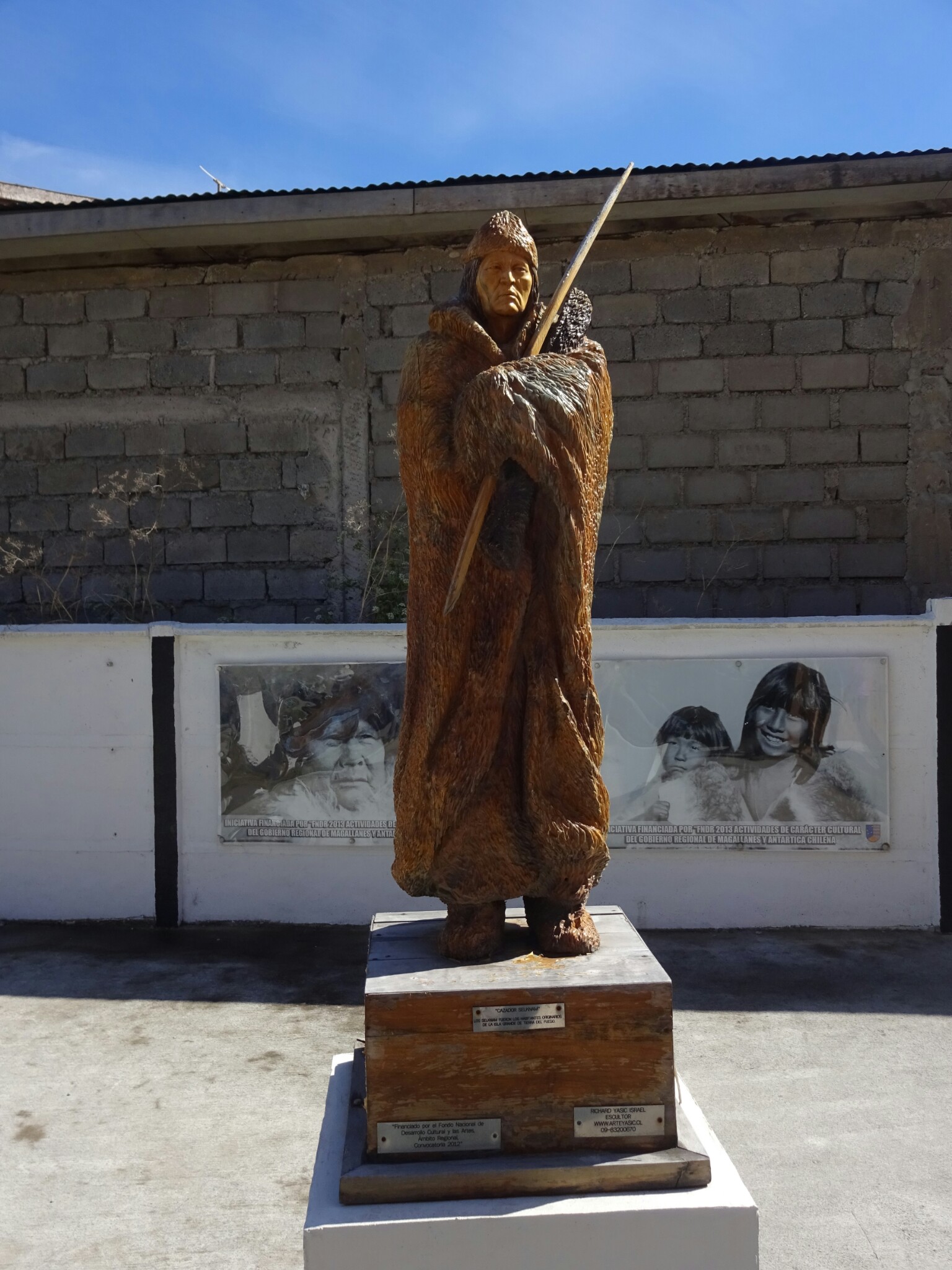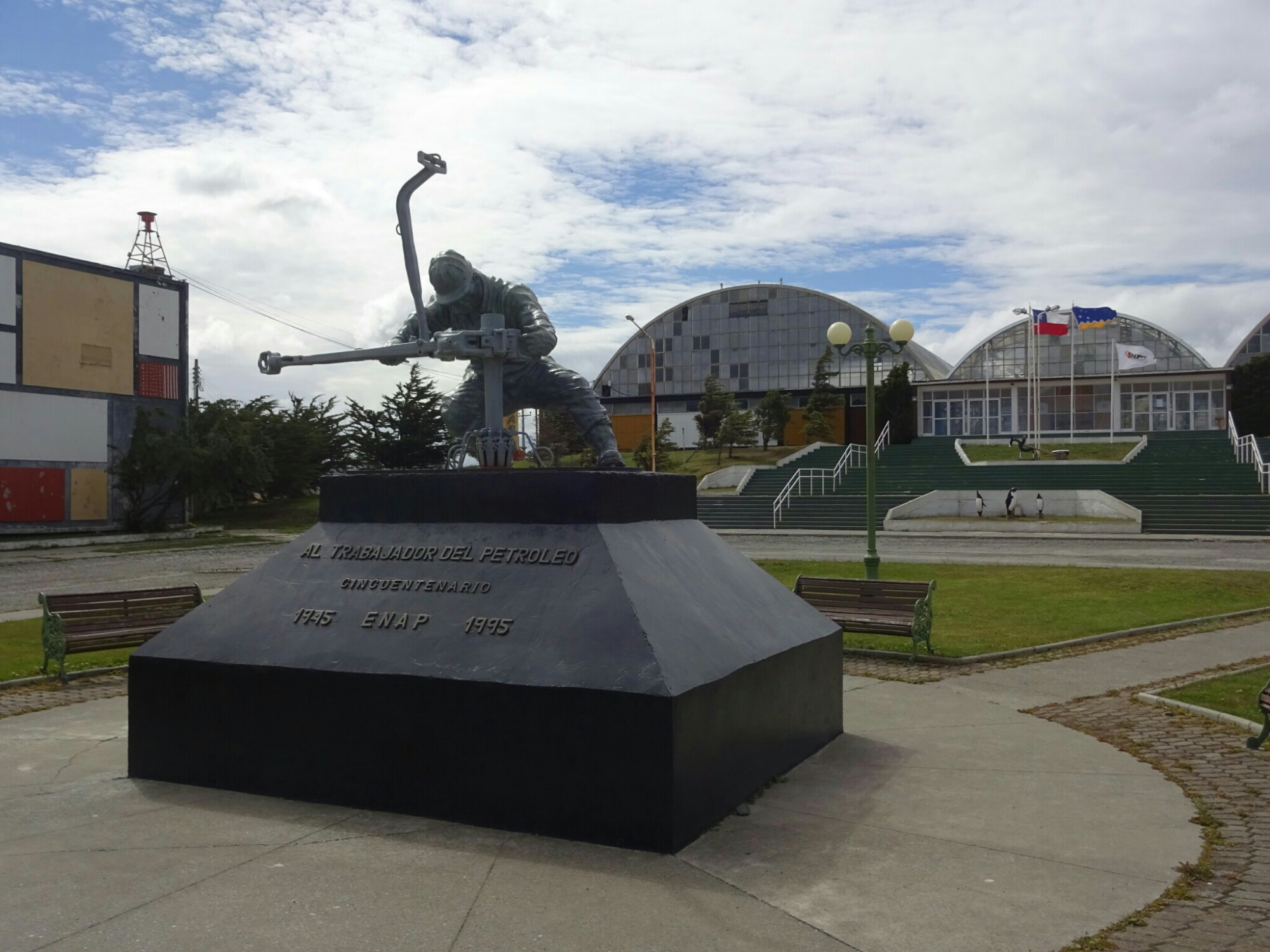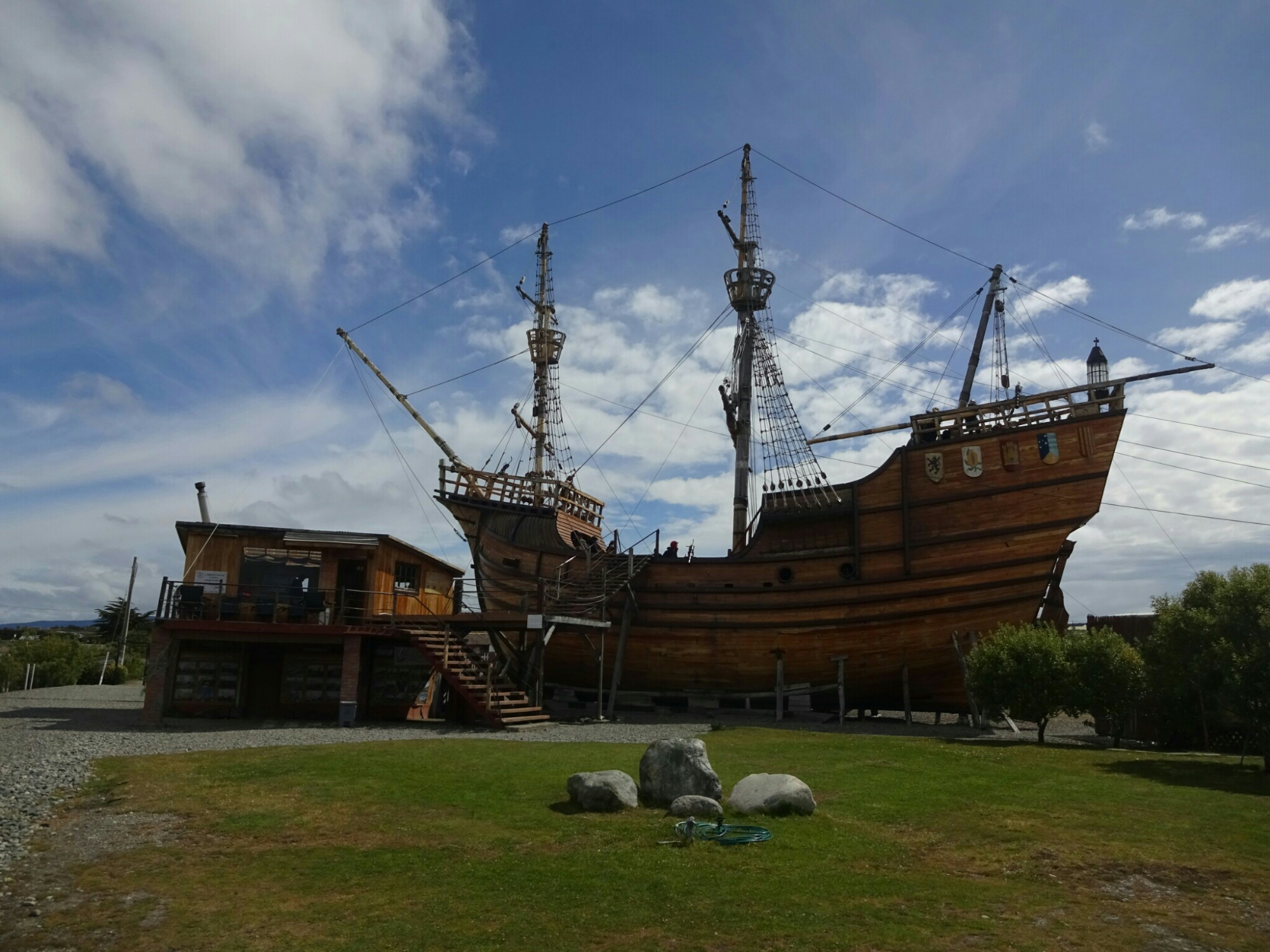From Puerto Montt to Punta Arenas I took a flight to meet up with Benno, a friend of mine from Germany, who is joining me for about three weeks. Punta Arenas is located in the south of Chile, in a province called Magellanes Region, named after the famous explorer, who discovered the navigational channel between the Atlantic and the Pacific Ocean, known as the Strait of Magellan.

It’s the southernmost city in continental South America and for sure has a climate that suits penguins. Just outside the city is Magdalena Island, which is inhabited by thousands of these little animals. However, I had already seen quite a few of them not too long ago on the Cape Peninsula in South Africa, so I opted for something different: A day trip to Tierra del Fuego with a visit to its king penguin colony.

After two hours of ferry ride we reached Porvenir a small harbor town on Tierra del Fuego. Here, we learned a bit about the Selknam, the indigenous group of about 4000 people that used to live here before the European settlers came in and killed most of them for pastures and through diseases, to which they had no natural resistance. In 1967 the last one of them died, and with her a proud tribe of people, who were tall, generally good looking and had managed to live with the strong winds of the area like nobody had before.

From there we continued to the eastern end of “Bahia Inutil” (Useless Bay), which was only useless to the explorers, because it was too shallow for anchoring their ships. For the king penguins it’s just the right location for their colony, as the shallower water protects them from orcas, their predators. As excavations have shown, they’ve been living here for hundreds of years, but gave it up at some point only to rediscover it in 2007. Back then there used to be just a few of them, now their number has grown up to 150, about 50 of them were present when we visited them.


On our way back to the mainland, we passed through the tiny town of Cerro Sombrero, which was built for the servicing of the oil and gas fields in the area. Unfortunately we could not have a look inside the oldest cinema in Chile, because it was closed due to the heavy winds. This meant, that we’d have to be lucky for the ferry back to the mainland, which doesn’t operate, if the waves are too high. But after about ten minutes of waiting we were able to enter the boat, bringing us safely to the other side.


The next day we had nothing planned, because we wanted to take a bus to El Calafate (Argentina), but we only managed to get tickets for the day after. In the morning it was rainy and we didn’t do a lot, but in the afternoon it cleared up and we went for the Nao Victoria museum. The “Nao Victoria” was one of ships of Magellan’s fleet, which was sponsored by the Spanish king in hope for a new trading route to India. The Portuguese king did not believe in his mission and had denied him the funds for the expedition. The “Nao Victoria” is also the only one Magellan’s ships that completed the sail around the world and proved the theory of the globe. It even returned with enough goods that it paid off all the bills for the expedition.


Other life-size ship models in the museum include a ship to colonize southern Chile from the north, the “HMS Beagle”, which was Darwin’s ship for his expeditions, and the “James Caird”. This is the dinghy that played a key role in one of the mayor Antarctica expeditions, because it was improvised with a refit to suit sailing the rough oceans to get help after the main ship had been stuck and sunk in the antarctic ice. The rescue mission was successful and all men were rescued.


